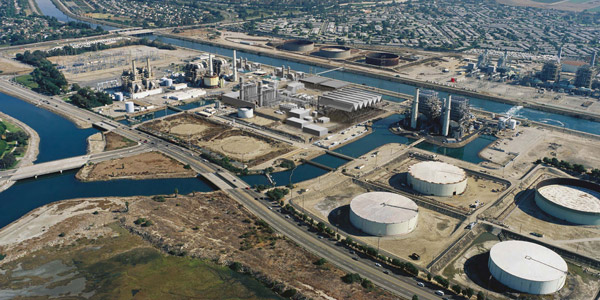By Robert Mullin
It typically takes “two or three or four things” to occur for CAISO declare a grid emergency, according to Tim Beach, an operations shift manager with the ISO.
“Which is what played out here on May 3,” Beach said during a May 16 Market Performance and Planning Forum, at which he recounted why CAISO on that day declared its first Stage 1 emergency in 10 years.
The causes on this day: high temperatures, a generator failure, no-show imports and a rebuff from suppliers.
The emergency triggered the use of demand response programs managed by the ISO’s member utilities. (See California Grid Emergency Comes Days After Reliability Warning.) A more critical “Stage 3” signals the threat of blackouts.
Warm Day
Although May 3 was forecast to be one of the warmest days of the year to date, it was considered a day with “pretty normal” conditions, Beach said. Los Angeles area temperatures ranged from the mid-80s downtown to the mid-90s farther inland and to the north.
System loads began to diverge from day-ahead forecasts about 1 p.m. “That’s not unusual,” Beach said. “We typically see a lot of that. We’ll see it diverge and we’ll also see it come back and converge again at peak or after peak.”
About 10 minutes later, a 330-MW unit at AES’ gas-fired Alamitos generating station in Long Beach shut down unexpectedly, taking with it 270 MW of energy production that had been awarded in the day-ahead market.
Still, conditions remained normal throughout the afternoon, and the ISO was carrying ample reserves by the time load peaked at 5:45 p.m.
No Shows
But a short time later, about 1,150 MW of imports scheduled in the day-ahead market didn’t materialize. The hour-ahead market then awarded 1,230 MW of supplemental energy on the interties for the hour ending 8 p.m. But about 830 MW of the awards were declined by the suppliers.
“So going into hour ending [8 p.m.], we’re over the peak. We’ve got solar ramping off very quickly. It’s starting to look pretty tight,” Beach said.
At 6:42 p.m., with solar quickly coming off the system, the shift manager on duty began canvassing the utilities for available DR.
“That’s a typical procedure we do,” Beach said. “We go out and look and make sure we have a number that we can operate to.”
Within 15 minutes, the shift manager determined that the ISO’s area control error — the difference between actual and scheduled generation — was at 750 MW. With solar continuing to roll off the system, the manager was forced to deploy reserves, which then fell to about two-thirds of the 1,870-MW requirement.
Emergency Declared; DR Called
About 7 p.m., CAISO declared the Stage 1 emergency, simultaneously calling for 843 MW of DR from the utilities.
“And at [7:34 p.m.], with the DR deployed, our ACE was up to 34 MW on the plus side,” Beach said. “So we recovered briefly, but solar is still ramping off — but the load’s ramping off at the same time.”
By 8 p.m. the situation had stabilized. The ISO called off the emergency an hour later.
Brian Theaker, director of market affairs at NRG Energy, asked how much of the 843 MW of DR deployed by the ISO actually responded to the dispatch call.
“I can’t establish that at this time,” Beach said. “I think the market analysis [will provide] the exact number or a close number. We’ll rely on some of that to come from the utilities as well.”
Wei Zhou, senior project manager at Southern California Edison, asked whether transfers from the Western Energy Imbalance Market (EIM) assisted during the event.
“There were about 500 MW of transfers around that time, so it was helping us,” said Guillermo Bautista Alderete, CAISO director of market analysis and forecasting.
Why the Rejections?
Bautista Alderete was unable to address a question about exactly why suppliers on the interties declined the 8,300 MW of awards ahead of the event. Such declines are not unusual, but “not to this level, not to this volume,” he responded.
“This is somehow an action that [suppliers] can take and this is something we have to discuss further as to how we can enhance the procedure that we have,” Bautista Alderete said. “Because usually you don’t want to see them decline when you need that [energy] most.”
“Was it a lot of different entities that made up the 830 [MW of declines] or was it just a few?” asked Carolyn Kehrein, a consultant for Energy Users Forum.
“I would love to give you an answer on that,” Bautista Alderete said. “We haven’t completed the full analysis, so I would like to hold off on that answer.”





